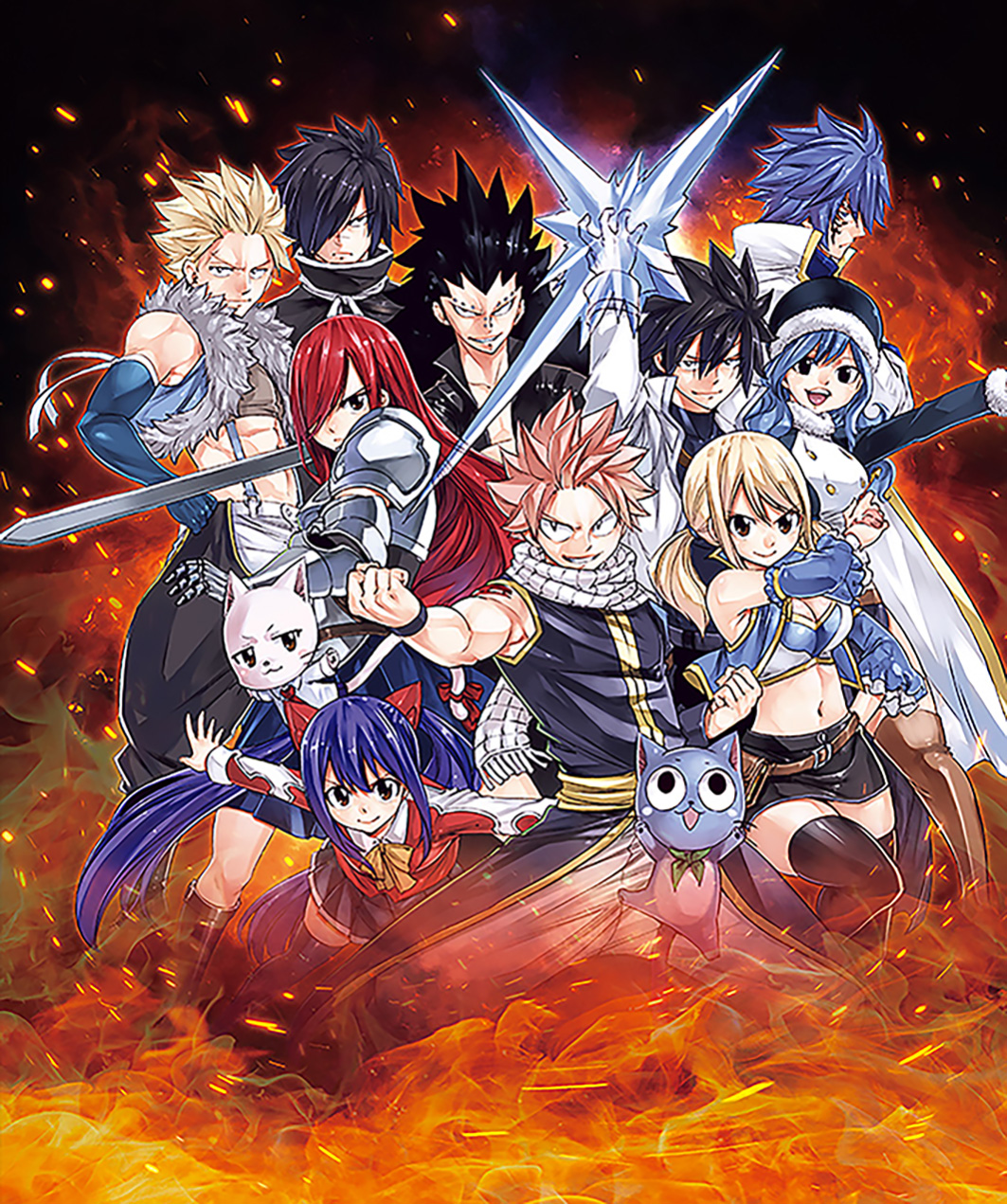
Pros
- Gameplay loop is satisfying
- Lots of character progression systems
- Art style fits the source material
Cons
- Framerate is choppy in places
- Too much over sexulization of the female cast
- Story confusing for newcomers
Fairy Tail is based off the Manga written by Hiro Mashima that ran from 2006 all the way until 2017 with a massive 63 volumes. It was later made into an anime in 2009 that ran until 2019 and as such, there is a long franchise history to work with when the game was first announced. As someone who’s very much a newcomer to Fairy Tail, I fell into the bracket that Gust claimed was great to experience the story for the first time and therein lies my first major gripe with the game, as expected of a franchise, the game does expect you to have some prior knowledge and cuts a lot of corners in the process. Fairy Tail is set in the world of Earth-Land that is home to many guilds and wizards who use their magic for the good of the people as they take on requests. Among this are wizards known as Dragon Slayers with the powers from different elemental infused dragons and main character Natsu Dragneel is one such wizard. Fairy Tail takes place in the Kingdom of Fiore and the game begins at the end of the Tenrou Island arc, the eleventh arc of Fairy Tail and as such, puts you straight into the finale of it during the prologue.
It can be argued that you may be expected to have some prior knowledge of Fairy Tail going into the game but fans of developer Gust’s previous games (such as the Atelier series) may be going into it looking for a new Turn Based JRPG and as Koei Tecmo declare, experience the story of Fairy Tail for the first time. I will admit to being completely lost in the prologue of the game and I was immediately worried about the story, the game makes no attempt to introduce the characters, the world or any of the stakes save for a few entries of past events in the in-game encyclopedia. This too, is very light on information, giving a very brief paragraph on the events of the previous arcs and if you’re new to Fairy Tail, this is all you have to go on. As with many games with openings such as Fairy Tail, you’re also in control of a large cast of characters at a high level and despite the flashy looking battles, I was hopelessly lost and immediately worried about the story as someone who was a relative newcomer to Fairy Tail.
This is as far as the game goes to explain current events at the start of Fairy Tail.
Thankfully, the prologue is short as it deals with the end of that arc and the game’s main plot then shifts to a seven year time-skip that sees the cast stripped of their powers and their Guild, once the top Guild in Fiore, stripped of its rank. This is the start of the Grand Magic Games arc and is where much of the story takes place and for the most part, it is a great choice to have the story take place during this period. The game takes the time in the first few chapters to properly introduce the characters, world and the Guild itself as you work to restore Fairy Tail to it’s former glory and as a newcomer, I was able to get invested in the story a lot easier. There are of course lots of references to previous arcs and this will be a treat to fans of the franchise, but I never felt utterly lost in the plot like I did during the prologue.
For the most part, the game follows the loop of taking on requests at the guild to raise the rank of Fairy Tail while taking part in the Grand Magic Games however in between is where the game truly shines. Gust have taken the choice to include some original storylines in the more unique Quests and Character Stories and this allowed me to get more absorbed with the story and better acquainted with the large cast. There are of course some major corners cut in the plot, at times the game will feed you the story through female protagonist Lucy Heartfilia, as she explains events in her diary while at other times, you’ll have characters integral to the plot relegated to off-screen textboxes who at times, won’t even have voice acting which ends up incredibly jarring. The first particular instance of this was when Fairy Tail were talking to a trio of characters from a previous arc, only there was only two characters on screen and the third, without a voice, was just a textbox leaving me to wonder if said character was a spirit or something else. It wasn’t until a little later where this happened with greater frequency, especially towards the later stages of the story, that I realized that this was the developer trying to cut corners with the story. A larger issue for many however Is the amount of over sexualization at times of the female characters. Although those better acquainted with Fairy Tail may be familiar with the anime using similar story beats, it’s jarring to a newcomer just how much there is with skills focusing on it and of course scenes with the female cast in swimsuits and speaking about their bodies, it’s a portion of the game I felt could have been toned down from the franchise it’s based off.
The gameplay loop of doing Quests to rank up the Guild is a fun one.
The gameplay is where Fairy Tail truly shines and like most Gust developed games, there is a nice gameplay loop to it all. As mentioned above, the Guild needs to work its way back to being the number 1 guild in Fiore and you’ll do this by taking on Requests at the Request Board which can range from simple tasks such as finding items in town to heading out to one of the many fields in the game to battle monsters and more. There is a staggering amount of Quests to undertake and the more unique ones come with required characters to take with you and a short story to accompany them. You’ll never run out of Quests too as there are repeatable ones you can take to help build the Bonds between the cast and receive more Jewels (the currency of Fairy Tail) which is handy as there is a lot to spend your Jewels on and a large roster to play around with. The Guild will also increase in usefulness as you progress in the game as you’ll unlock the ability to upgrade and remodel facilities that offer a host of useful features such as a Shop, a Laboratory that will allow you to craft Lacrima (more on this a bit later) and even the Request Board itself which will allow you to more easily impact what Quests show up on it.
This all leads to the battles, the meat of the game and if you have played Gust games before, you’ll have a good idea of what to expect. While roaming the fields and during story events, you will encounter onscreen enemies and you can strike them to give yourself a speed boost at the start. Battles take place on a grid in a Turn Based format where the order is determined by the speed stat however you will not have a list showing you who’s turn is next. You’ll have the basics in Attack and Defend but more importantly is the Magic command, think of this as your standard attack as you’ll always have plenty of MP to make use of them so long as you keep an eye on it dropping too low. This is due to the nature of the game’s world where wizard’s need magic to survive and as such, if either your HP or MP is depleted, that character is knocked out; this may sound more difficult than in practice however, during my entire playthrough I never once ran out of MP and I used nothing but Magic attacks. As battles take place on a grid, every magic attack you use affects a particular section of the battlefield, which can be viewed before you actually confirm the attack. On top of this, all enemies have resistances and weaknesses and with all of this in play, it makes the large roster useful as each character will be useful for certain situations. Some characters may have magic that is more focused on hitting single targets or enemies in a line while others may hit larger areas or debuff the enemy. You will always certainly want a Support character in your party and due to the party size eventually reaching a max of 5, there is more than enough space to get the use out of your favorite characters. The game’s art style really shines in the battles however and they have done a fantastic job of capturing the franchises charm of flashy magic attacks and is especially noticeable in the Magic Chain system. Upon dealing battle in damage, the Fairy Meter will increase and once it reaches max, you’ll be able to use Magic Chain which will see your party members chain their magic together until you hopefully end it with either a Finisher or the more unique, Extreme Magic which will put out some serious damage from guest characters.
Your attacks will target certain areas on the grid, making every attack useful in certain situations.
This is a useful feature as the fields you explore will have areas blocked off by rocks or other areas that can be outright destroyed with the Over Damage system. When you pass by a nearby structure like this, you’ll see a damage requirement such as 20,000 and when you initiate a battle with an enemy nearby, if you output this damage, you’ll destroy the object and gain access to the path behind it, usually containing treasures or shortcuts. The areas in general are very reminiscent of Gust’s Atelier series in that they’re rather small, one-screen areas with harvesting points where you’ll find useful items needed for crafting Lacrima, upgrading the facilities in the Guild or to hand over to NPCs for Community Service quests, there’s always something to do and this gameplay loop is where Fairy Tail is at its best. The only major complaint here is the number of areas you do visit is a bit on the short side, with there being six main fields to explore with a few more that unlocks in the postgame.
There’s decent character progression to Fairy Tail too, not only will characters gain new and improved magic from levelling up but you can also change their stats with the previously mentioned Lacrima. This serves as the game’s equipment system and as your character’s levels and ranks increase, you will be able to equip up to five per character. These can range from simple stat boosts to inflicting status effects on your enemies while each character has a unique Lacrima to them that can be equipped, this will usually focus on strengthening their playstyle. Characters also have a rank, from 1-10, which you can increase using the Guild Points you obtain when the Guild ranks up, these will unlock new Skills for the character such as extending their Magic Chain, a new costume and even new Magic. Finally, there’s the Character Bond system which will see you unlock further Skills between two characters based on their affinity for one another, this can be increased by battling together or going out on Quests and you’ll usually get a short Bond Story between the two characters although this is removed in some of the less important characters. This is usually saved for characters that are unlocked via their Character Stories, side stories that feature characters outside of the main cast. There’s a meaty postgame involved too which, for someone like me who’s not as heavily invested in the story as fans, is great as there are a lot of new unique Quests to take on, even more Character Stories and even a new progression method for your characters once they reach Level 99, there’s a lot to dig into here.
Battles are flashy and satisfying to watch play out.
There are of course many issues I have with Fairy Tail unfortunately starting with the voice acting. For one, considering there is a good English dub out there for the anime, I’d have liked the option for one here however what is there is good. More importantly however is the fact that none of the voice acting in battles are subtitled and although this is mainly used for calling out attack names, there are some instances of characters exchanging words during important plot battles. There are also cases where certain characters are not voiced at all in story events which is jarring when most of the other dialogue is voiced. The performance can be spotty at times too, the loading is a high point as there is rarely much of it at all, even when going to different areas however in cities, the framerate can be sluggish at times. The game in general is also on the easy side, especially the main story due to how easy it is to output significant damage, I played the game on the Normal difficulty and I did dabble into Hard a little but still found it on the easier side which is a bit of a shame. There is however some difficulty to be found in the postgame which is welcome due to there being a lot to dig into there.
Entertaining
Fairy Tail is a fun romp through the kingdom of Fiore with many interesting features although newcomers to the franchise may feel lost at times with the story.
Gameplay:
Sound:
Graphics:
Value Rating:


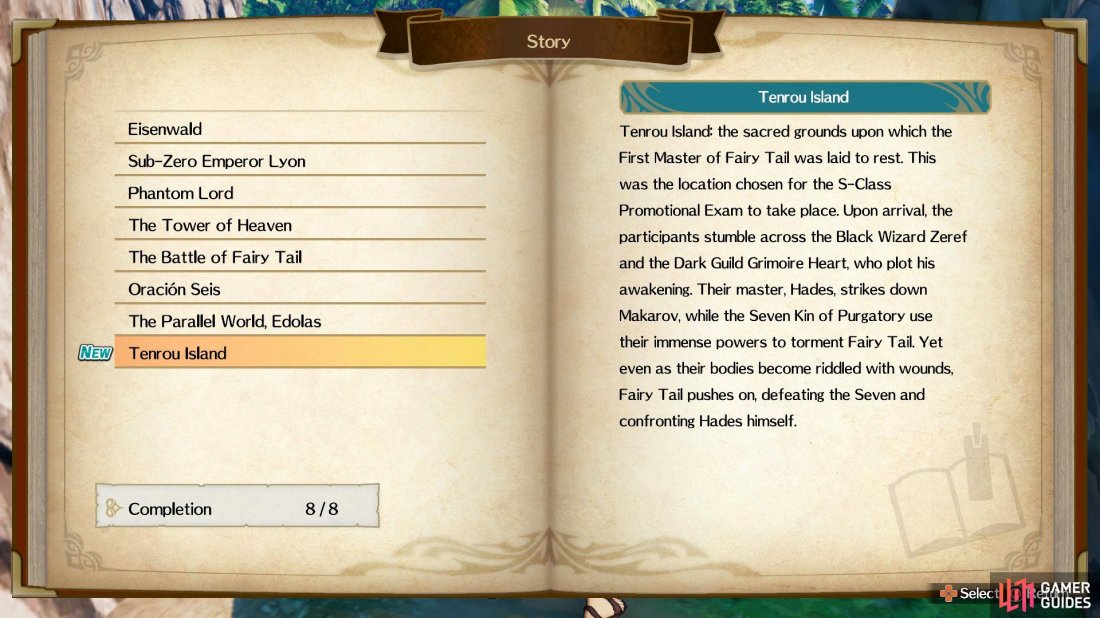
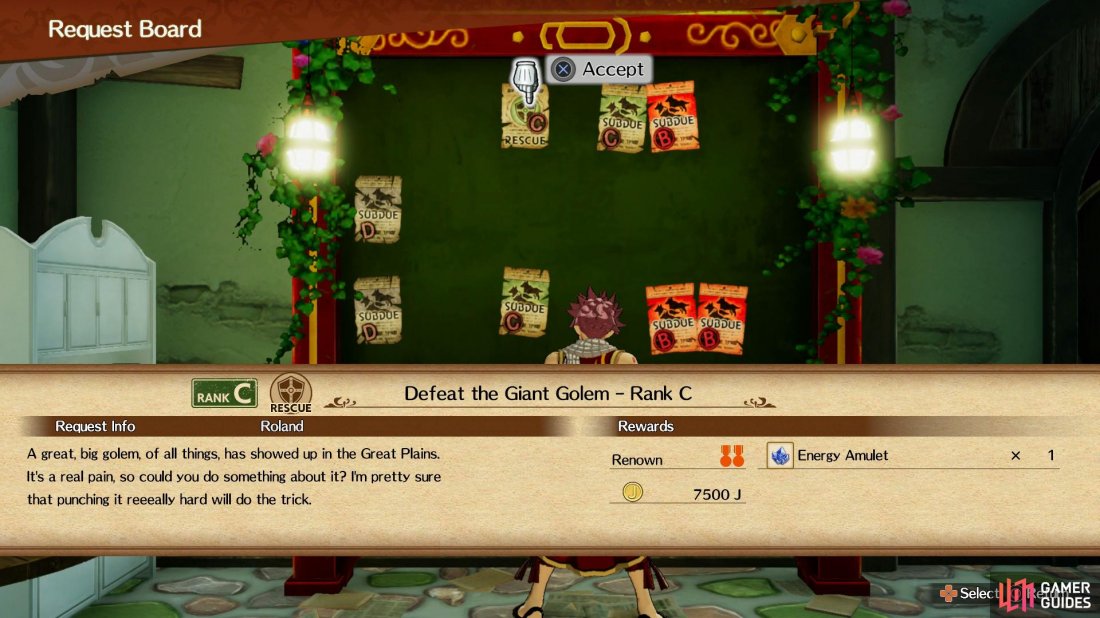
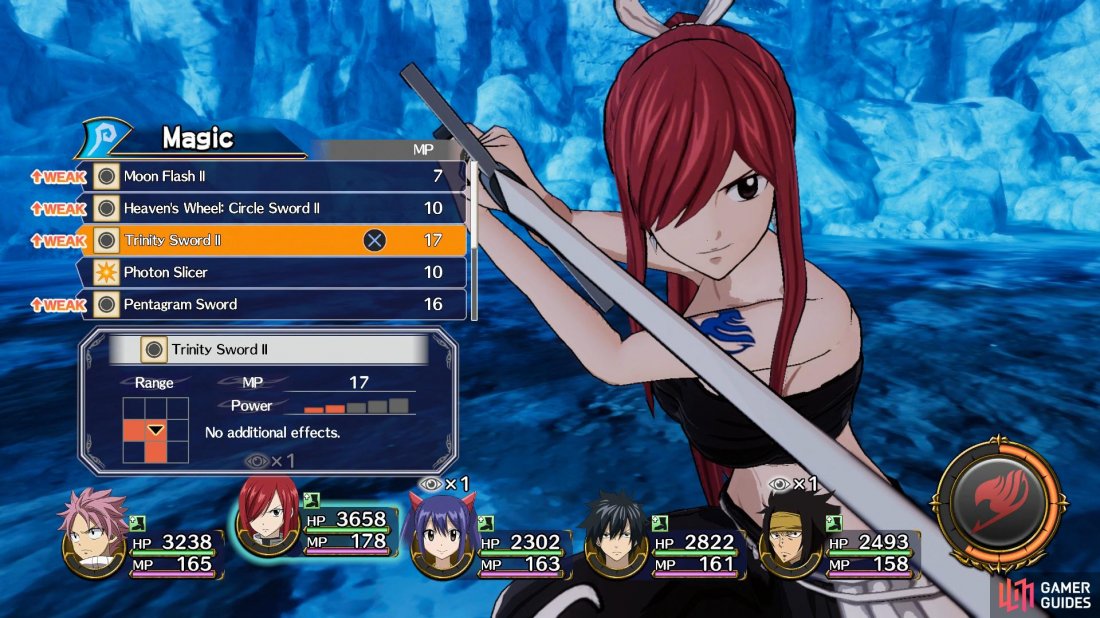
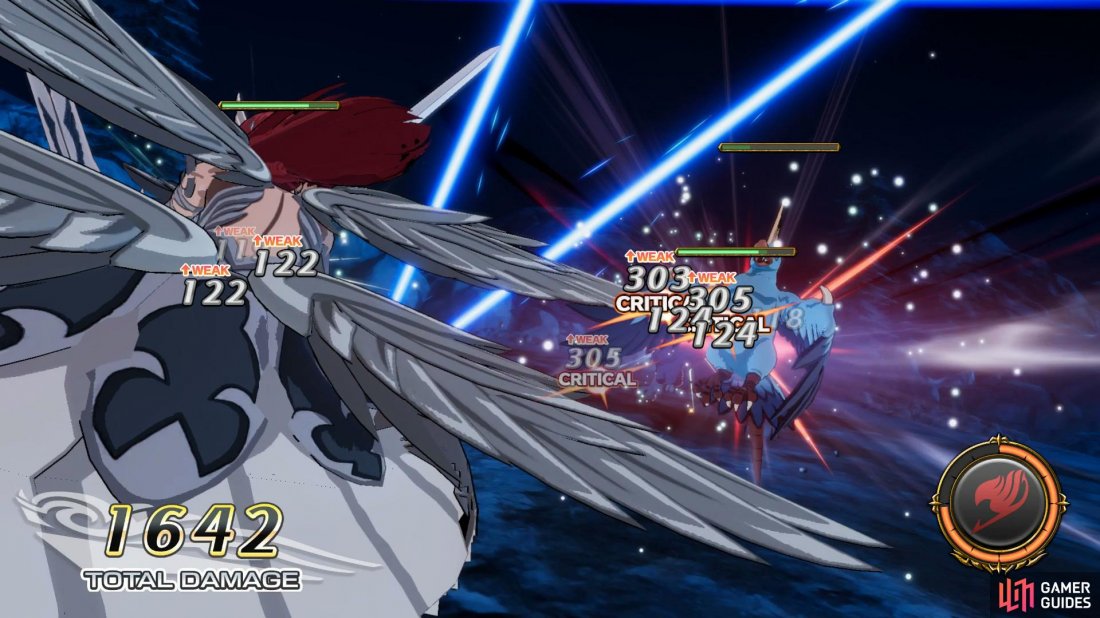
 Sign up
Sign up
No Comments